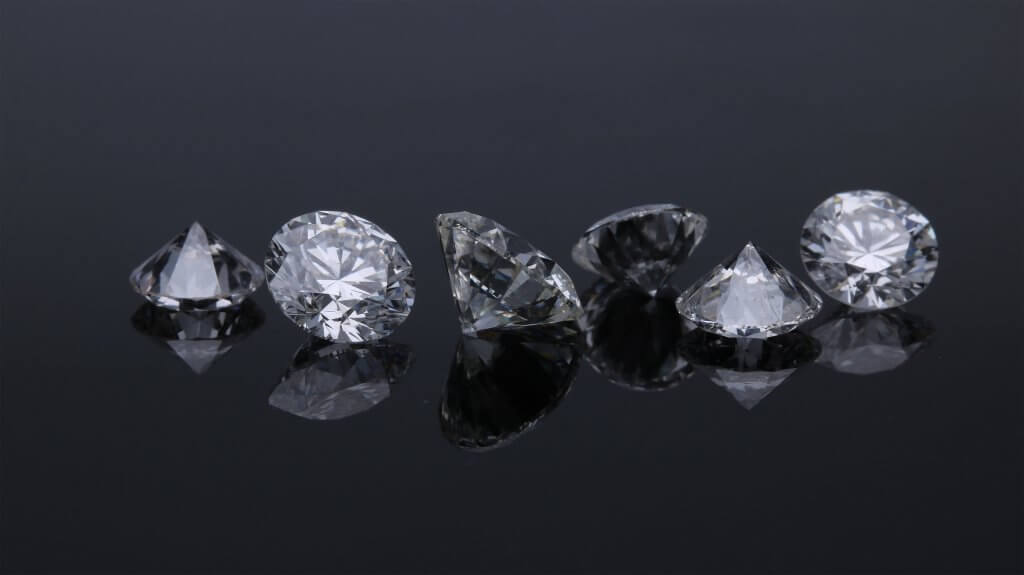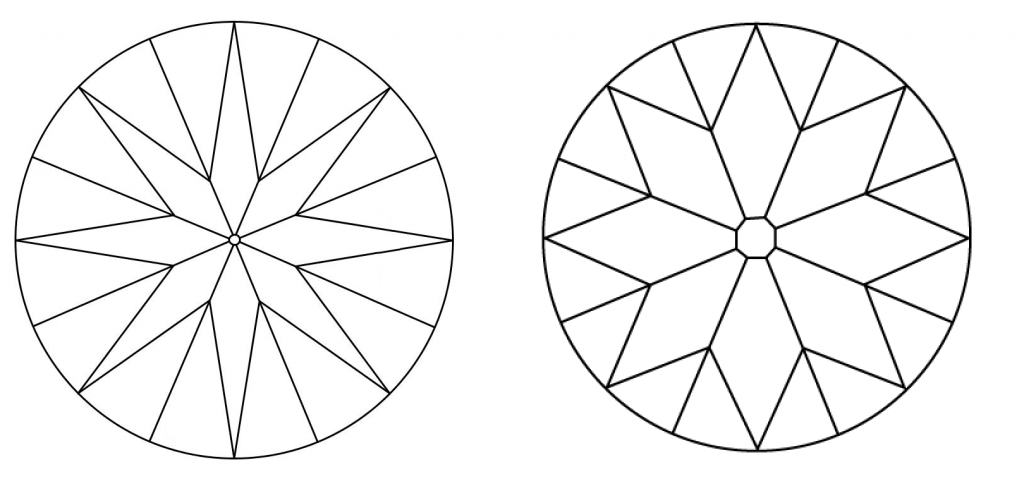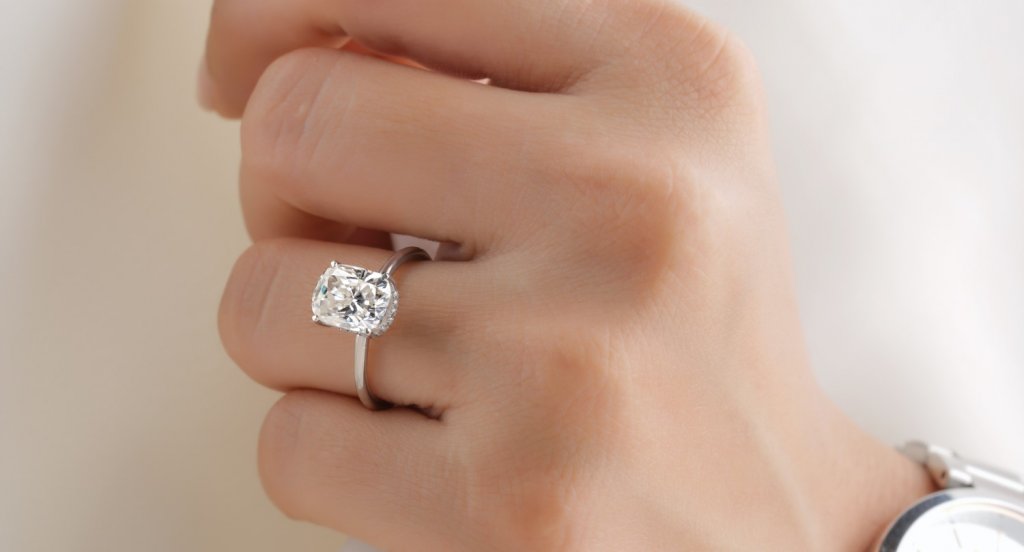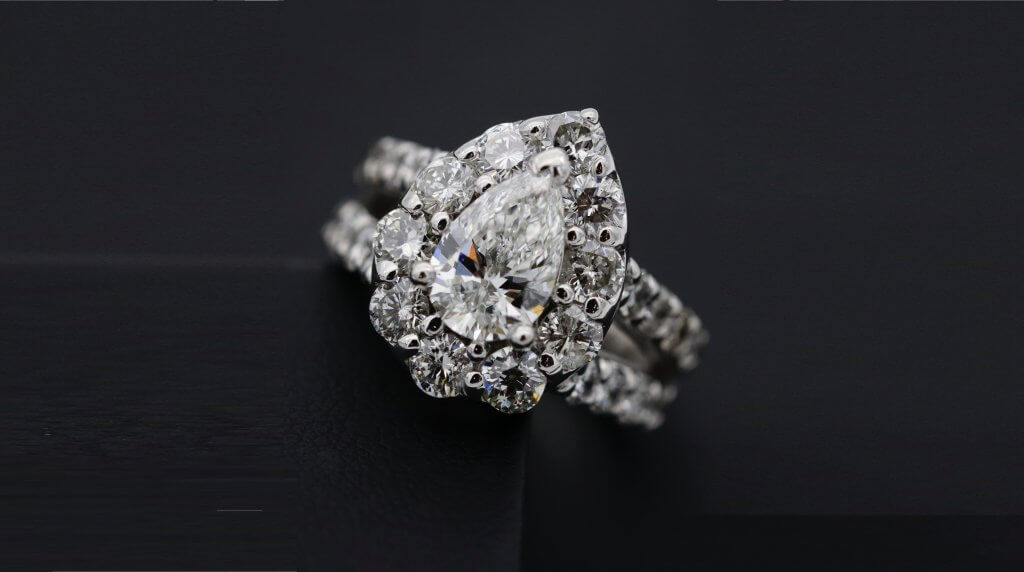Understanding The Diamond Culet: The Ultimate Guide
Key Takeaways
- These days, most diamonds are cut without a culet.
- While very small culets don’t pose much of an issue, a culet cut into the base of a diamond can appear as an inclusion, visible through the center of table.
- The point at which the facets of the diamond’s pavilion meet can be vulnerable to chipping when the stone is still loose.
- As a result, culets were originally put there to offer more protection to the diamond while it was being set within the piece of jewelry but, these days, most jewelers have the tools and skills to avoid damaging the diamond during this process.
- Focus on diamonds with no Culet at all. You won’t’ struggle to find them.

Before you started to learn about the ins and outs of diamonds – in fact before you even decided you were going to propose – you were probably familiar with the traditional profile of a round cut diamond.
And, while the terms ‘table’, ‘crown’, ‘girdle’ and ‘pavilion’ probably used to hold totally different meanings for you – and the term ‘culet’ would have meant absolutely nothing – chances are you were aware that this classic diamond shape features a long, tapering lower half that eventually ends with a sharp point.
Many of us start our journey fixating on the birds’ eye view of the diamond – the shape seen from above, whether it’s round, oval or something a little less common, like the heart. Nevertheless, every part of the diamond’s cut is vital to its overall appearance and, as it turns out, that traditional profile requires the same attention to detail as every other viewpoint – starting from the culet.
This is a vital consideration when determining the strength (or potential weaknesses) of a diamond’s proportions, and must be factored into your ‘To Do’ list when you talk with your jeweler.
What Does Culet Mean in Diamonds?
The culet is the lowest point on the diamond.
Pronounced ‘Queue-let’, the culet is generally characterized by a sharp, precise point where the long facets of the pavilion meet. In these instances, however, the point is often referred to as ‘no cutlet’ as, in some diamonds, the culet is turned into another small facet with a single cut that runs parallel to the diamond’s table.
This is why round cut diamonds can have either 57 or 58 facets. Those with 58 facets will have a cutlet that runs parallel to the table, while those with 57 will feature a sharp point
Many of us are so used to the traditional ‘diamond shape’ – and so caught up in the birds’ eye view of a diamond – that we don’t question why they feature this precise point at their base – or whether we want to find a diamond with or without one. Not only that, but the way the culet is cut plays a central role in the diamond’s overall appearance, and in its value.
What is the Main Purpose of a Culet?
These days, the culet is there to offer a little extra protection to the diamond between the time it is cut and the time it is mounted into jewelry, since a sharper point at the bottom of the pavilion is more liable to break than an additional, flat facet is.
Remember that this part of the diamond is still pretty strong, but that you wouldn’t want it to be subjected to a blow or hard knock.
However, provided the person setting the diamond within the ring (or any other item of jewelry) is careful, the risk to the diamond’s structural integrity is pretty low. This is why it’s preferable to shop from established and highly reputable brick and mortar businesses, rather than online, as you can be sure of the levels of skill, care, time, and attention that goes into this delicate process.
Once set within a well-crafted ring setting, the culet is no longer anywhere near as vulnerable to damage.
This is why, for the most part, today’s diamond’s don’t generally feature culets. Shoppers are getting increasingly wise about where (and who) they shop from, and are turning to the expert talents of local jewelers who are more than capable of treating a diamond with the care it deserves.
Is a Culet on a Diamond Good or Bad?
A culet is now considered a pretty negative feature for a diamond, since it Is visible through the center of the table and can appear as an inclusion in an otherwise eye clean diamond.
To be clear, a culet is not an inclusion or a blemish, so, for instance, a diamond with a large culet can still be graded VVS1. However, the culet will have a significant impact on your birds’ eye view of the diamond.
Put simply, when a culet is cut into a diamond, then its own transparency can work against it, since this additional facet will be visible through the table. As a result, the clean, crisp view through the center of the diamond is infringed upon, and, as we mentioned above, can appear included – even if you’re paying for eye cleanliness. In cases where the culet is particularly small, this may appear as a relatively minor black dot but, even then, it can be hard to see past when you’re hoping for visual perfection.
What’s more, adding another facet to the diamond can create its own problems…
Does a Culet Affect Sparkle?
Yes, in some cases the culet can be big enough to reduce a diamond’s light performance.
As we mentioned before, flattening the base of the pavilion means turning an otherwise sharp point into a brand new facet – and that naturally means that some light will be lost through it.
Losing light through the base of the diamond is certainly far from ideal. This is light that would otherwise be refracted back through the stone and transformed into additional sparkle on the diamond’s surface. That high degree of sparkle we all covet is caused by a complex path that light takes through the table, between the many facets of the pavilion (a process known as refraction) and back out through the table and crown of the diamond. Light lost through the base of the diamond is, unfortunately, light wasted.
Small culets are unlikely to cause a tangible drop in the diamond’s light performance, but they can still appear as dark spots, visible through the diamond’s table, and undermine the time and money you invested into finding an eye clean diamond.
How is the Culet Graded?
The GIA grades the culet using percentages, calculated according to the ratio of the diamond’s average diameter to the measurement of the culet (if, of course, it has one).
Much like the GIA’s grades for table and depth, culet size grades are designated by percentage (specifically, the size of the culet divided by the average diameter of the diamond, multiplied by one hundred), rather than a particular size as, while a 1mm culet could be large for a smaller diamond, it would be considered very small on a diamond with a higher carat grade.
Here are the following culet grades, as used by the GIA:
- None – This is also known as a pointed culet, and simply means that the pavilion tapers off into a perfect point. The GIA regards this as an intrinsic part of an Excellent cut diamond.
- Very Small – Comprising less than 1.5% of the diamond’s average diameter.
- Small – Comprising around 1.5% of the diamond’s average diameter.
Up to this point, the culet can go unnoticed unless under intense magnification. The following grades are not so forgiving, and a visible culet will grow more noticeable with each grade:
- Medium – Comprising around 3% of the diamond’s average diameter.
- Slightly Large – Comprising around 5% of the diamond’s average diameter.
- Large – Comprising around 7% of the diamond’s average diameter.
- Very Large – comprising around 11% of the diamond’s average diameter.
- Extremely Large – Comprising 15% or more of the diamond’s average diameter.

How Big Should the Culet Be?
No culet is always the best option and, given the fact that many, many modern diamonds are cut without a culet, it’s not difficult to hold out for a stone without this potentially disruptive feature.
In your diamond’s GIA Report, a section entitled Diamond Proportions will feature a detailed diagram that details factors such as table percentage and depth. Look for a grade of ‘None’ written alongside the diagram’s culet, and you can feel confident knowing that this feature will not encroach upon the diamond’s otherwise eye clean appearance, and excellent sparkle.
So, Do You Need to Worry About the Culet?
Yes, but predominantly no. There are far more pressing things to think about, especially in light of the fact that most diamonds on the market today feature no culet.
It is important that you remain keenly aware of the fact that a culet can totally disrupt the clear, unincluded beauty of a diamond, and that, in many cases, they should be treated as dealbreakers. However, once you’ve double-checked the culet grade for any diamond that comes your way, you really don’t need to give it much more thought.
This is particularly true if you’re working with a reputable and experienced local jeweler, since, without a culet, the diamond is slightly more vulnerable to damage during the setting process. Once mounted in the ring, the absence of a culet won’t matter but, until that point, you want to be certain that your diamond is only ever in the hands of a skilled craftsman who understands the finesse involved in creating a diamond engagement ring to the highest possible standard.
So, no, you don’t really need to worry yourself over the culet – just focus on picking a beautiful diamond without one, and make sure that you find reputable local jeweler with the skills necessary to ensure the safety of your diamond.

Sep 18, 2021 By Willyou.net
This Diamond Cut Outsparkle The Rest – An Insider’S Guide

Mar 26, 2022 By Willyou.net
Key Information About Diamond Girdles








